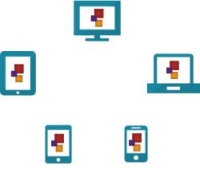With the recent fire and resulting 4 day power cut in central London, we are all reminded of the importance of disaster recovery and business continuity planning. As businesses were left without email or server access and unable to service clients, the reputational and monetary costs of this downtime quickly mounted. Electricity like IT is often taken for granted so when it goes wrong there can be serious consequences.
Whilst a power cut on this scale is at the more serious end of the spectrum, an Internet connection going down or a Cloud provider outage is often a more frequent and equally disruptive scenario. Below are some practical tips on what you can do to protect your business.
How we protect our business
At Foration we experienced almost zero downtime during the Holborn Fire and the core function of our business - our helpdesk - continued to service clients as normal. Many businesses were not so fortunate and suffered significantly as a result.
With all but one of our key systems being Cloud-based, we were able to run a "Coffee & Pastry" business continuity plan, which can be as simple when your office is inaccessible or your Internet connection fails, as taking your laptops to the nearest WiFi enabled coffee shop and camping out there or working from home until the situation is resolved. With our disaster recovery provisions, our on-site servers were up and running in our virtual disaster recovery data centre in under an hour. The result: levels of service were unaffected and our clients were none the wiser!
What you can do
Even businesses that are in the Cloud are not immune to disaster - after all, even the best Cloud providers occasionally have problems, so you need to have strategies in place should a service provider; server; or internet connection fail. Being able to respond to accidental and malicious deletion of data is equally important.
With the myriad of systems and services available, there is no ‘one size fits all' solution, so we've prepared a series of disaster recovery checklists to help your organisation with disaster recovery planning. However, before you start, we encourage you to list all the systems you use and ask these two questions:
1. How long can my business be without access to System X for?
2. How much information can I realistically afford to lose from System X?
#1 is known as your ‘Recovery Time Objective' and #2 is your ‘Recovery Point Objective', but put bluntly:
‘How long can I be down for and how much data can I afford to lose?'
One thing that is often overlooked when calculating the cost of downtime is reputational damage as well as any fines that a regulator may levy (such as FCA, SRA or The ICO). These losses are often way in excess of the loss in productivity and a damaged reputation is far harder to repair than a server.
Achieving a high level of resiliency for your business requires the right mix of technology, planning and process and we hope that this article and associated checklists help you start the disaster recovery planning conversation within your organisation.
Contact: www.foration.com |020 7099 9384






